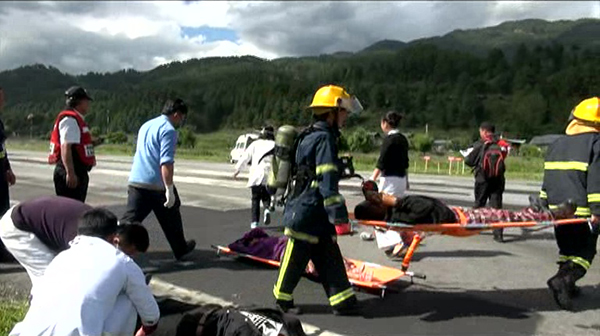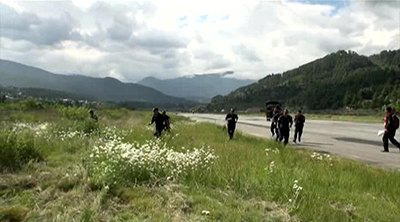 For the very first time, a full-scale emergency exercise, or simply put an air disaster mock drill, was conducted at the domestic airport in Bumthang on Thursday.
For the very first time, a full-scale emergency exercise, or simply put an air disaster mock drill, was conducted at the domestic airport in Bumthang on Thursday.
Such an emergency exercise is new to the Bhutanese air industry with the Paro International Airport also having done the drill only twice so far.
The exercise is crucial for correcting response time and preparedness of the airports and relevant agencies in times of air disasters.
On the day of the drill, the Air Traffic Controller at the airport’s Control Tower was anticipating a usual landing as he communicates with the pilot on board. Other staff members too are carrying out their routine activities, unaware of what’s going to happen within the next few seconds.
The Controller then receives a report of an air accident and everyone is caught off-guard.
The firefighting vehicle rushes to the site. Security personnel restrict unauthorised individuals from going towards the crash site.
The airport’s Fire and Rescue team rushes towards the burning plane and begins to put out the fire, while others take care of the casualties.
Meanwhile, the medical team and police personnel arrive at the scene.
This is what it would be like in case of a real air accident. The drill lasted for 45 minutes.
After the drill, all the personnel involved in the exercise gathered for an assessment. The Chief of the Airport Service Division, Tashi Dukpa, rated the drill as average.
“Since it was the first ever emergency drill for Bumthang airport, we expected to make a lots of mistakes. For today, the area we found to be weak was communication between the different agencies involved,” Tashi Lhamo, the Airport Manager, said.
“So, we will definitely be looking into how we can improve communication between different agencies when we respond to emergencies in the future.”
The airport currently has a firefighting vehicle, an ambulance, six fire and rescue staff and six security personnel.
It has plans to conduct table talks on such drills once annually and full-scale emergency exercise once every two years hereafter.
These are mandatory practices called as the Standards and Recommended Practices or SARPs recommended by the International Civil Aviation Organization.
“We have certain set of procedures that we follow every day in order to ensure safety in our airports but we haven’t really tested ourselves on how we will be able to use these resources in times of need,” Airport Manager Tashi Lhamo said.
“The sort of cooperation that we got from the Dzongkhag, the hospital and the Royal Bhutan Police was immense and if we continue to practice our drills, our preparedness and response during emergencies will definitely be better.”
A similar drill was conducted at the Paro International Airport in April this year. There are plans to conduct such drills at the Yonphula and Gelephu Domestic Airports by next week.
The Department of Air Transport is also in the process of signing Memorandum Of Understanding (MOU) with different agencies to ensure their participation in such exercises and more importantly in an event of an actual air accident.












